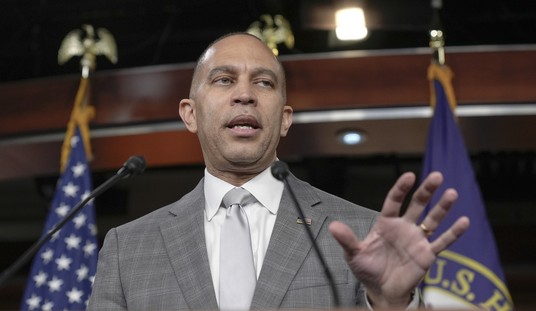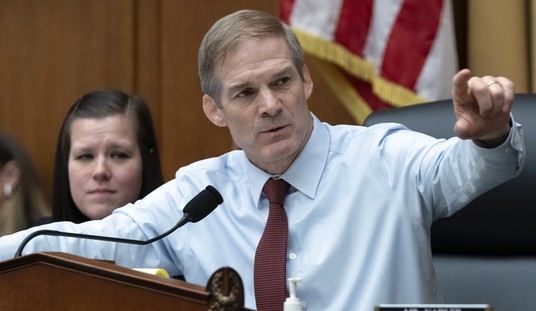When it comes to the filibuster, I’m a regular flip-flopper. I can’t figure out where I stand on this issue. But neither, evidently, can the New York Times. Nowadays, they find a filibuster rule change abhorrent. But back in the early days of our republic… 1995… they felt rather differently. Here’s their editorial from January 1 of that year:
The New York Times
January 1, 1995, Sunday, Late Edition – Final
SECTION: Section 4; Page 8; Column 1; Editorial Desk
LENGTH: 711 words
HEADLINE: Time to Retire the Filibuster
The U.S. Senate likes to call itself the world’s greatest deliberative body. The greatest obstructive body is more like it. In the last session of Congress, the Republican minority invoked an endless string of filibusters to frustrate the will of the majority. This relentless abuse of a time-honored Senate tradition so disgusted Senator Tom Harkin, a Democrat from Iowa, that he is now willing to forgo easy retribution and drastically limit the filibuster. Hooray for him.
For years Senate filibusters — when they weren’t conjuring up romantic images of Jimmy Stewart as Mr. Smith, passing out from exhaustion on the Senate floor — consisted mainly of negative feats of endurance. Senator Sam Ervin once spoke for 22 hours straight. Outrage over these tactics and their ability to bring Senate business to a halt led to the current so-called two-track system, whereby a senator can hold up one piece of legislation while other business goes on as usual.
The two-track system has been nearly as obstructive as the old rules. Under those rules, if the Senate could not muster the 60 votes necessary to end debate and bring a bill to a vote, someone had to be willing to continue the debate, in person, on the floor. That is no longer required. Even if the 60 votes are not achieved, debate stops and the Senate proceeds with other business. The measure is simply put on hold until the next cloture vote. In this way a bill can be stymied at any number of points along its legislative journey.
One unpleasant and unforeseen consequence has been to make the filibuster easy to invoke and painless to pursue. Once a rarely used tactic reserved for issues on which senators held passionate convictions, the filibuster has become the tool of the sore loser, dooming any measure that cannot command the 60 required votes.
Mr. Harkin, along with Senator Joseph Lieberman, a Connecticut Democrat, now proposes to make such obstruction harder. Mr. Harkin says reasonably that there must come a point in the process where the majority rules. This may not sit well with some of his Democratic colleagues. They are now perfectly positioned to exact revenge by frustrating the Republican agenda as efficiently as Republicans frustrated Democrats in 1994.
Admirably, Mr. Harkin says he does not want to do that. He proposes to change the rules so that if a vote for cloture fails to attract the necessary 60 votes, the number of votes needed to close off debate would be reduced by three in each subsequent vote. By the time the measure came to a fourth vote — with votes occurring no more frequently than every second day — cloture could be invoked with only a simple majority. Under the Harkin plan, minority members who feel passionately about a given measure could still hold it up, but not indefinitely.
Another set of reforms, more incremental but also useful, is proposed by George Mitchell, who is retiring as the Democratic majority leader. He wants to eat away at some of the more annoying kinds of brakes that can be applied to a measure along its legislative journey.
One example is the procedure for sending a measure to a conference committee with the House. Under current rules, unless the Senate consents unanimously to send a measure to conference, three separate motions can be required to move it along. This gives one senator the power to hold up a measure almost indefinitely. Mr. Mitchell would like to reduce the number of motions to one.
He would also like to limit the debate on a motion to two hours and count the time consumed by quorum calls against the debate time of a senator, thus encouraging senators to save their time for debating the substance of a measure rather than in obstruction. All of his suggestions seem reasonable, but his reforms would leave the filibuster essentially intact.
The Harkin plan, along with some of Mr. Mitchell’s proposals, would go a long way toward making the Senate a more productive place to conduct the nation’s business. Republicans surely dread the kind of obstructionism they themselves practiced during the last Congress. Now is the perfect moment for them to unite with like-minded Democrats to get rid of an archaic rule that frustrates democracy and serves no useful purpose.
LOAD-DATE: January 4, 1995
I guess it depends on what your definition of “obstructive” is. (hat tip: BL)









Join the conversation as a VIP Member